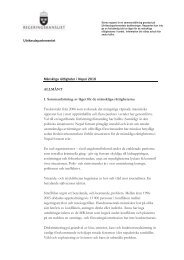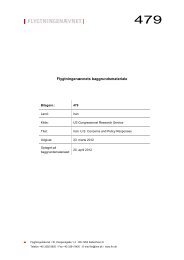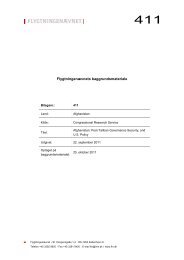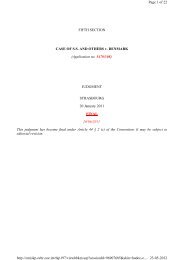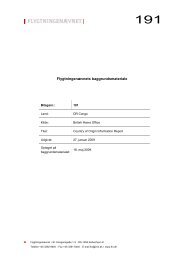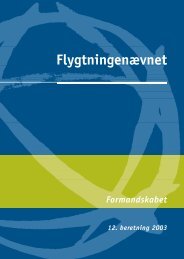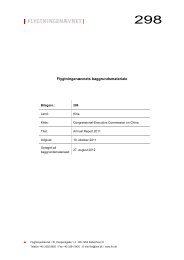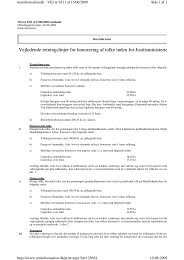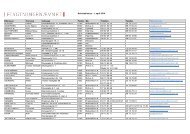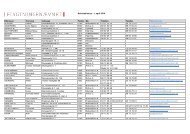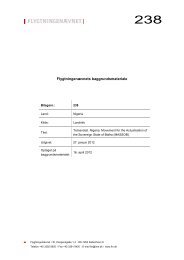Annual Report - National Human Rights Commission
Annual Report - National Human Rights Commission
Annual Report - National Human Rights Commission
You also want an ePaper? Increase the reach of your titles
YUMPU automatically turns print PDFs into web optimized ePapers that Google loves.
<strong>Rights</strong> of Women and Children<br />
○ ○ ○ ○ ○ ○ ○ ○ ○ ○ ○ ○ ○ ○ ○ ○ ○ ○ ○ ○ ○ ○ ○ ○ ○ ○ ○ ○ ○ ○ ○ ○ ○ ○ ○ ○ ○ ○ ○ ○ ○ ○ ○ ○ ○ ○ ○ ○ ○ ○ ○ ○ ○ ○ ○ ○ ○ ○ ○ ○ ○ ○<br />
○<br />
3] Role of <strong>National</strong> <strong>Human</strong> <strong>Rights</strong> Institutions in the Prevention of Trafficking<br />
in Women and Children<br />
8.11 It was reported in the preceding annual report that the Advisory Council of Jurists of the Asia<br />
Pacific Forum of <strong>National</strong> <strong>Human</strong> <strong>Rights</strong> Institutions, that met in New Delhi in the year 2002, had<br />
deliberated on the issue of trafficking at its Seventh <strong>Annual</strong> Meeting. The Advisory Council of Jurists<br />
later forwarded its Final <strong>Report</strong> on the issue of trafficking to the <strong>Commission</strong>. In this report, it made a<br />
number of recommendations for preventing and combating trafficking that was adopted by the<br />
<strong>Commission</strong>. The <strong>Commission</strong> desired that the report be forwarded to the Department of Women<br />
and Child Development, the nodal Department in the Government of India (Ministry of <strong>Human</strong><br />
Resource Development) dealing with issues pertaining to women and children, and the Ministry of<br />
Home Affairs for appropriate action. Accordingly, the report was sent to the concerned Ministries<br />
with the request that action taken on the recommendations be reported to the <strong>Commission</strong>.<br />
8.12 At the time of writing this report, the <strong>Commission</strong> had not received any response from the<br />
Ministry of Home Affairs. However, the Department of Women and Child Development vide<br />
their letter dated 4-10-2004 informed the <strong>Commission</strong> about the initiatives taken by them to<br />
combat trafficking in women and children. These were as follows:<br />
(i)<br />
(ii)<br />
Ratification of the Protocol to Prevent, Suppress and Punish Trafficking in Persons,<br />
Especially Women and Children, supplementing the United Nations Convention<br />
Against Transnational Organised Crime (the UN Trafficking Protocol) was under<br />
process in consultation with the Ministry of External Affairs.<br />
The Immoral Traffic (Prevention) Act, 1956 was being amended to make it more<br />
stringent for traffickers and humane to victims.<br />
(iii) The State Governments had been requested for effective implementation of the Plan<br />
of Action and regularly reviewing State action.<br />
(iv) The officers of the level of Inspector and above in the Central Bureau of Investigation<br />
have been notified as Trafficking Police Officers for investigation of inter-state<br />
trafficking cases.<br />
(v)<br />
A scheme called SWADHAR had been started for women in difficult situation. The<br />
same was made applicable to victims of trafficking also. The scheme provides for<br />
shelter, counselling, medical assistance and vocational training to the rescued victims.<br />
(vi) The Department had formulated a model grant-in-aid scheme for assistance to NGOs<br />
to combat trafficking in source areas, transit areas and destination areas through<br />
prevention, rescue and rehabilitation. Emphasis was being placed on awareness<br />
118<br />
<strong>National</strong> <strong>Human</strong> <strong>Rights</strong> <strong>Commission</strong> <strong>Annual</strong> <strong>Report</strong> - 2004-2005<br />
AR-Chapter-1-19-10-6-06.p65<br />
138<br />
7/17/06, 6:29 PM



